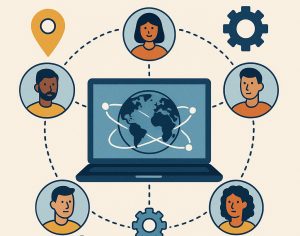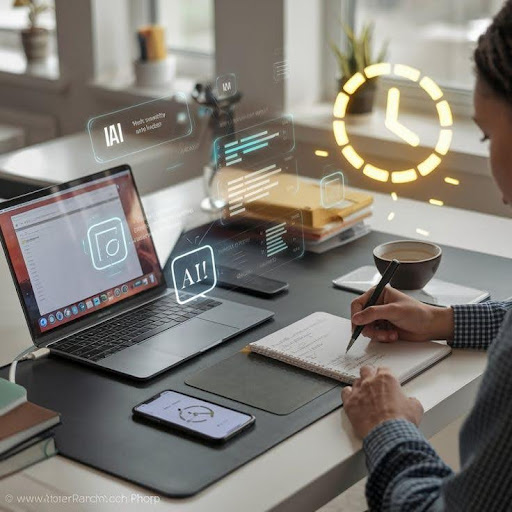The daily commute was replaced by a walk to the home office, and the rigid structure of a corporate cubicle gave way to the comfort of one’s own space. The narrative was one of ultimate freedom and flexibility, a chance to reclaim work-life balance and escape the oppressive oversight of a traditional office. However, for a growing number of remote employees, this promised land has begun to feel like a mirage. In place of a visible manager looking over their shoulder, a different kind of oversight has emerged: a “digital panopticon” of constant monitoring, keystroke tracking, and webcam surveillance. This fundamental shift from physical presence to digital performance raises a critical question: is remote work a true expression of freedom, or is it merely a more insidious and pervasive form of control?
The Allure of the Remote Work Dream
[On note] The benefits of working from home are well-documented and widely celebrated. For employees, the lack of a commute saves both time and money. The ability to structure one’s day around personal needs offers a flexibility that was once unimaginable. For companies, remote work promised reduced overhead costs, access to a wider talent pool, and the potential for a more engaged and satisfied workforce. The initial months of the pandemic-driven shift demonstrated that many jobs could be done effectively from a home office, leading to a permanent change in the work model for a significant portion of the global workforce.
The Flexibility and Autonomy Myth
The core tenet of the remote work dream is autonomy. The idea that an employee is trusted to manage their own time and workload, with a focus on output rather than hours spent at a desk. This autonomy was expected to foster a new kind of employer-employee relationship, one built on mutual respect and trust. Many early remote work proponents believed that a move away from physical oversight would inherently create a more liberated workforce.
REMOTE CLOCK
The Rise of the Digital Panopticon
While some companies embraced a trust-based model, many others quietly turned to technology to replicate and even intensify the oversight they had in the physical office. A new, multi-billion-dollar industry of employee monitoring software has emerged, offering a suite of tools designed to ensure a remote worker is always “on.”
Keystroke Tracking and Activity Monitoring
The most common form of digital surveillance is keystroke tracking and activity monitoring. These applications, often installed without a worker’s full knowledge, record every key pressed, every mouse movement, and every click. They can take screenshots of an employee’s desktop at random intervals, log which applications are in use, and even calculate an “activity score” to determine how productive an employee is being. This form of surveillance is a direct digital replacement for the manager who might physically check on an employee’s desk every hour. The goal is to enforce a culture of being visibly busy, even when the task at hand does not require constant activity.
Webcam and Microphone Monitoring
Some companies have taken surveillance a step further by requiring employees to keep their webcams on for the entire workday or to use software that randomly activates their camera and microphone. This level of monitoring is designed to ensure a physical presence, even when the work itself is solitary. This constant state of being watched can be a significant source of stress and anxiety for employees, creating a feeling of being in a #digitalsurveillance prison from the very place that was supposed to be a sanctuary.
The Hidden Costs of Constant Monitoring
This shift from physical to digital oversight is not without its costs. While companies may believe they are increasing productivity, they are likely causing long-term damage to employee morale, trust, and mental well-being.
The Erosion of Trust
Employee surveillance sends a clear and unambiguous message: “We do not trust you.” This lack of trust can be a demoralizing force, leading to a breakdown in the employer-employee relationship. When an employee feels that their every move is being watched and judged, they are less likely to be innovative, proactive, or engaged in their work. The constant pressure to appear busy can also stifle creativity, as employees may avoid taking the time needed for strategic thinking or deep work. The result is a workforce that is focused on performance theater rather than genuine productivity.
Burnout and Mental Health Impacts
The constant pressure to perform under a watchful digital eye can lead to significant mental health issues, including anxiety, stress, and burnout. The separation between work and personal life, which was supposed to be a key benefit of remote work, becomes blurred. The home, which was once a place of relaxation and sanctuary, can feel more like a controlled workspace where one is always on. The feeling of being monitored 24/7 can lead to a pervasive sense of dread and can ultimately drive a workforce to a state of exhaustion, undermining the very flexibility that remote work was supposed to offer.
Working from home for people


A Path Forward: Trust, Not Technology
For remote work to live up to its promise of being a truly liberating force, companies must move away from a model of control and toward a culture of trust. The focus must shift from monitoring inputs (keystrokes, mouse movements) to measuring outputs (results, completed projects). A healthy remote work culture should prioritize clear goals, open communication, and a focus on an employee’s contributions rather than their activity. By doing so, companies can foster an environment where employees feel empowered and respected, ultimately leading to greater long-term success and a more engaged and resilient workforce. The future of remote work is not about better surveillance technology, but about building a better and more #trustbased relationship between employees and their employers.


